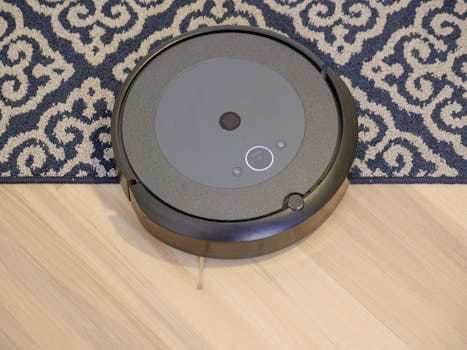
Smart Homes and Smart Living: The Technological Transformation of European Homes by 2025
Smart Homes and Smart Living are revolutionizing the way we live in European homes. With the latest technological advancements and innovations, homes are becoming more efficient, sustainable, and comfortable. In this article, we will explore the current state of smart homes and smart living in Europe and what we can expect by 2025.
Introduction to Smart Homes and Smart Living
Smart homes and smart living refer to the integration of technology and automation in homes to make them more efficient, convenient, and sustainable. This can include a range of features, such as energy management systems, home automation, and smart appliances. The goal of smart homes and smart living is to create a comfortable and convenient living environment that is also environmentally friendly.
Current State of Smart Homes and Smart Living in Europe
Europe is at the forefront of the smart home and smart living revolution. Many European countries, such as Germany, the UK, and France, are investing heavily in smart home technology and infrastructure. According to a recent report, the European smart home market is expected to grow from $12.3 billion in 2020 to $43.8 billion by 2025, at a compound annual growth rate (CAGR) of 24.1%.
Technological Advancements and Innovations
There are several technological advancements and innovations that are driving the growth of smart homes and smart living in Europe. Some of the key trends include:
- Artificial intelligence (AI) and machine learning (ML): AI and ML are being used to create more intelligent and automated home systems that can learn and adapt to a homeowner’s behavior and preferences.
- Internet of Things (IoT): The IoT is a network of physical devices, vehicles, home appliances, and other items that are embedded with sensors, software, and connectivity, allowing them to collect and exchange data.
- 5G and Wi-Fi 6: The latest wireless communication technologies, such as 5G and Wi-Fi 6, are providing faster and more reliable connectivity for smart home devices.
- Sustainability and energy efficiency: Smart homes and smart living are becoming increasingly focused on sustainability and energy efficiency, with features such as solar panels, energy management systems, and smart thermostats.
Benefits of Smart Homes and Smart Living
There are several benefits to smart homes and smart living, including:
- Increased convenience: Smart homes and smart living can make life easier and more convenient, with features such as voice control, automated lighting and temperature control, and smart appliances.
- Energy efficiency: Smart homes and smart living can help reduce energy consumption and lower energy bills, with features such as energy management systems and smart thermostats.
- Improved safety and security: Smart homes and smart living can improve safety and security, with features such as smart door locks, security cameras, and emergency response systems.
- Enhanced comfort: Smart homes and smart living can create a more comfortable living environment, with features such as smart temperature control, air quality monitoring, and smart lighting.
Challenges and Limitations
While smart homes and smart living offer many benefits, there are also several challenges and limitations to consider, including:
- High upfront costs: Smart home devices and systems can be expensive, making them inaccessible to many homeowners.
- Complexity: Smart home systems can be complex and difficult to install and maintain, requiring significant technical expertise.
- Interoperability: Different smart home devices and systems may not be compatible with each other, making it difficult to create a seamless and integrated smart home experience.
- Security risks: Smart homes and smart living can also introduce new security risks, such as hacking and data breaches, if not properly secured.
Conclusion
In conclusion, smart homes and smart living are transforming the way we live in European homes. With the latest technological advancements and innovations, homes are becoming more efficient, sustainable, and comfortable. While there are challenges and limitations to consider, the benefits of smart homes and smart living make them an attractive option for many homeowners. As we look to the future, it is clear that smart homes and smart living will play an increasingly important role in shaping the European housing market by 2025.





